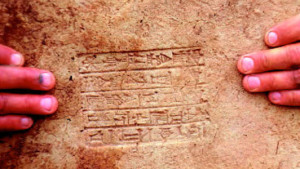Christian believe prophecies are divinely inspired messages given to a person who has been called by God to deliver them. The word prophecy comes from two Greek words—pro, which means “before,” and phanai, which means “to speak before,” to tell about something before it happens. The messages prophets bring are often predictions about coming events, but they can also be guidance on how to meet these coming challenges as well as admonitions for our own past deeds and failures. It’s important to note that the prophecies are inspired but not dictated. Taht is, the actual messages are often presented with the prophet's individual style and choice of words. Biblical prophecies can be classified into four categories.
1. Messages to Israel in the Old Testament
Of the 39 books in the Old Testament, 16 bear the name of a prophet. The majority of the messages from these prophets were relevant for the prophet’s own time. In more than 200 cases, the prophecy begins with words such as, “The Lord said to me . . .” They were warnings about apostasy, posible attacks from neighbouring countries, famines, pestilences and the dangers of experiencing exile. The prophet called for the people to change their behaviour and renew their obedience to God, promising that He would show mercy. Such prophetic warnings were given in direct speech, with the prophet speaking to the people the way a preacher would.
2. The First Coming of Christ
There are more than 1000 prophecies in the Old Testament that foretell the birth, life, ministry, suffering, death and purpose of Jesus' first coming, and they were given hundreds of years before He was born. The prophets foretold, among other things, that a virgin would give birth to a Boy named Immanuel (Isaiah 7:14) in the town of Bethlehem (Micah 5:2) and He would be Heir to the throne of King David (Isaiah 9:7). Daniel 9:25–27 even revealed the time when He would appear on the earth. These prophecies were so clearly expressed that later, after Jesus was crucified, the apostles Peter and Paul successfully used the events of His life to convince others to accept Him as Lord and Saviour.
3. End-Time Signs
The book of Daniel, the Gospels (Matthew, Mark, Luke and John), and the letters from Paul (13 books from Romans to Philemon) foretold signs in heaven, on earth and in human society that would reveal when the end of the world was near. These prophecies foretold “signs in the sun, moon and stars” (Luke 21:25) and “earthquakes in various places” (Mark 13:8). To these were added famines, wars and rumours of war (Matthew 24:6, 7). False prophets would also appear and deceive many people (verse 11). Some 20 examples of a deline in moral conditions would also mark the end (2 Timothy 3:1–5). It was even prophesied that knowledge would increase (Daniel 12:4).
These end-time prophecies were recorded without minor details. Since the disasters predicted have to some degree always been present in history, the effect has been that in the years since Jesus died, many generations have interpreted these prophecies for their own times, with many expecting the soon second coming of Jesus in their lifetime. However, while we may indeed be living in the end time, with signs of the times being fulfilled at an ever- increasing speed, it’s important to remember that “no-one knows about that day or hour [of Christ’s return], not even the angels in heaven, nor the Son, but only the Father” (Mat- thew 24:36).
4. Global Anti-Christian Religious campaigns
The prophecies in both Daniel and Revelation deal specifically with political and religious forces that fight against divine purposes. The attempts to undermine God’s sovereignty over the affairs of men and the persecution of God’s people in all ages are set forth in symbolic pictures. Daniel wrote about a lion with wings, a bear with ribs in its mouth, a leopard with four heads and a ferocious beast with iron teeth and 10 horns (Daniel 7:4–8). The same kind of symbolic language is used in the book of Revelation, describing a beast with horns, dragons, harlots, scrolls, seals and trumpets. History has since revealed numerous rulers, emperors, kings, princes, dictators and religious leaders who in their deeds and forms of government could be identified with these symbolic beasts.
Foretelling Hope
Many of the Bible’s prophecies are related to specific situations for God’s people and serve as promises or warnings. Most importantly, the Bible’s fulfilled prophecies help us to understand that we can trust God’s Word. They give us hope and encourage us to persevere in our walk with God, giving support to the Bible’s divine origin.
An Amazing Prophecy
King Nebuchadnezzar was a king of the Neo- Babylonian Empire who reigned from 605 to 562 B.C. The Bible records a dream the king had, which was interpreted by the prophet Daniel.
Commenting on this dream, Daniel told Nebu- chadnezzar, “You looked, O king, and there before you stood a large statue—an enormous, dazzling statue, awesome in appearance. The head of the statue was made of pure gold, its chest and arms of silver, its belly and thighs of bronze, its legs of iron, and its feet partly of iron and partly of baked clay. While you were watching, a rock was cut out, but not by human hands. It struck the statue on its feet of iron and clay and smashed them. Then the iron, the clay, the bronze, the silver and the gold were all broken to pieces at the same time and became like chaff on a threshing floor in the summer. The wind swept them away without leaving a trace. But the rock that struck the statue became a huge mountain and filled the whole earth” (Daniel 2:31–35).
What did it all mean?
Daniel explained that the head, chest, thighs and legs represented four successive empires.
The head of pure gold. Nebuchadnezzar had raised Babylon to be a mighty and wealthy empire. The reconstructed Ishtar Gate in the Pergamon Museum in Berlin gives a view into a once glorious city. He built one of the ancient world’s seven wonders—the Hanging Gardens of Babylon—to create a more luxuriant feel for this desert-bounded city.
Yet Daniel predicted its demise: “After you, another kingdom will arise, inferior to yours” (verse 39). Amazingly, more than 100 years before the event, the prophet Isaiah also foresaw a day when Babylon would be overthrown (Isaiah 44:26–28), even naming the person responsible for leading the army that defeated the nation. Visit Babylon today and you will find nothing but a pile of uninhabited ruins.
The chest and arms of silver. Babylon was conquered in 539 B.C. by the combined forces of Media and Persia, led by a general named Cyrus. This happened just 60 years after Nebuchadnezzar’s dream and signalled the death of the golden empire and the birth of the silver one—the Persian Empire.
The Persian Empire became the most extensive to exist up to that time, stretching from the Indus Valley in the east through to Egypt in the southwest and Thrace and Macedonia on the border with Greece. It encompassed more than 8.5 million square kilometres that covered parts of three continents. It eventually ruled more than 50 million people, which was 44 per cent of the world’s population at the time.
The belly and thighs of bronze. After 200 years of imperial rule, the Persian Empire fell to the aggressive military might of a young Macedonian, Alexander the Great. Alexander never lost a battle and after a military campaign that lasted a mere 10 years, he established Greece as the next great empire of world history. He died prematurely at the age of 33 and his empire was divided into four parts. And this, too, was predicted by Daniel (Daniel 8:20–22).
The legs of iron. The division of Greece made it relatively easy for Rome to rise to power. The Roman standard was raised across Europe and North Africa and deep into Asia, and it held sway for almost 500 years. Jesus was born under the Roman government. Rome built roads that carried the first Chris- tian missionaries far and wide, and the Roman Colosseum was the scene of the death of many a Christian martyr.
The feet of iron mixed with clay. Daniel explained to Nebuchadnezzar the meaning of the feet with their mixture of iron and clay: “Just as you saw that the feet and toes were partly of baked clay and partly of iron, so this will be a divided kingdom. . . . [It] will be partly strong and partly brittle. And . . . the people will be a mixture and will not remain united” (Daniel 2:41–43).
Rome began to disintegrate and eventually fell to the invasion of barbarian tribes from the north and the east. Europe became a divided continent with a multitude of governments, cultures and languages. From these tribes, the nations of today’s Europe developed, which through the centuries have fiercely resisted all attempts to bring them together again as one great empire.
Yet, there is one more kingdom to come—the kingdom of the Rock: “The God of heaven will set up a kingdom that will never be destroyed, nor will it be left to another people. It will crush all those kingdoms and bring them to an end, but it will itself endure forever” (verse 44). The time is coming when this kingdom will become gloriously visible: when Jesus returns to earth.






